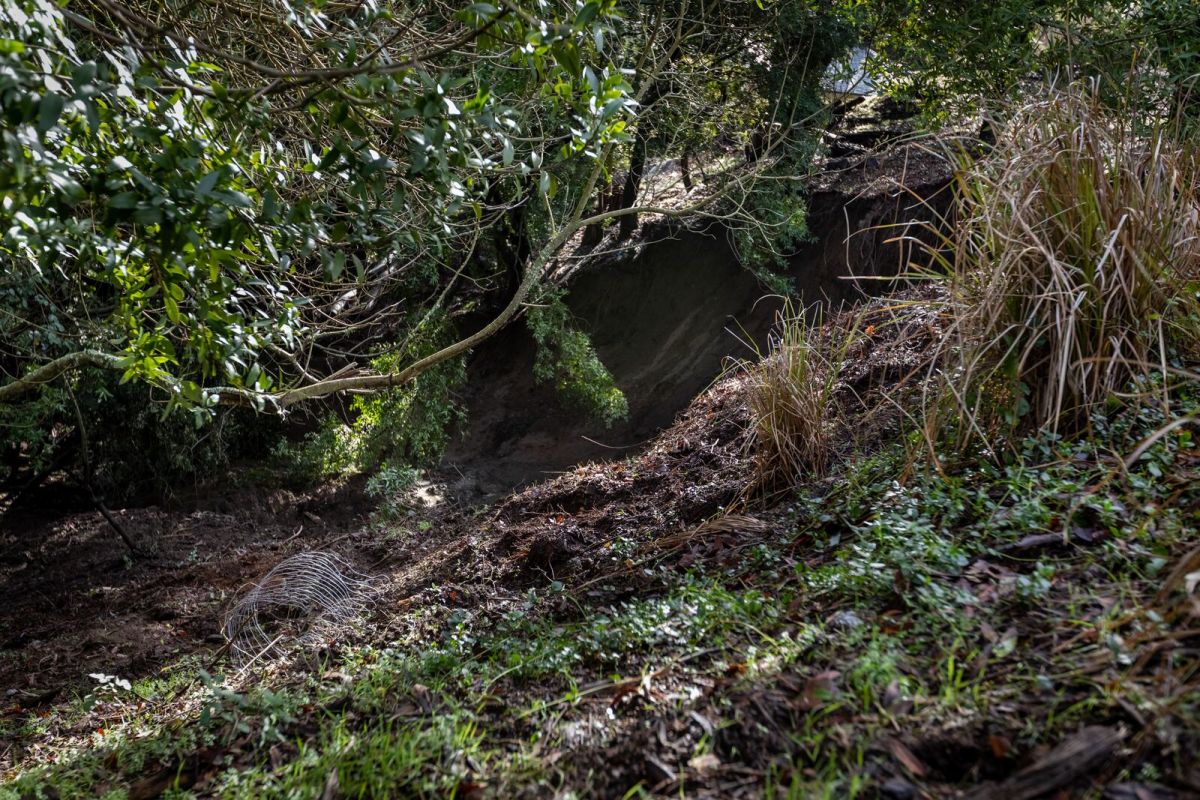
Update, Jan. 18 The National Weather Service has issued a coastal flood advisory from 6 a.m. Thursday to 3 p.m. Monday due to king tides across the Bay Area.
Original story, Jan. 17 Drier and colder weather is on the way. But the threat of minor flooding remains, and more landslides are possible this week with the city’s soils still sodden from weeks of unrelenting rain.
Berkeley is expected to see one “last, final, little wave of rain” Wednesday — adding up to less than a quarter of an inch — before entering a period of dry weather, said National Weather meteorologist Brooke Bingaman.
Tips on how to prepare for a landslide from the USGS
Bingaman said the end of the rains doesn’t spell the end of the risk of landslides.
“When you’re dealing with a situation like what we’ve just dealt with, where the soils are very, very saturated, then even after the heaviest rain has finished, the earth can still move, sometimes days or even weeks after that heavy rain has ended,” Bingaman said.
Temperatures will likely be colder than usual throughout the week. Expect temperatures in the upper 30s on Friday and Saturday. By Monday, Berkeley should be back in the low 40s.
The NWS issued a coastal flood advisory for Wednesday, but later reversed it in the Bay Area because of low rainfall estimates.
But king tides are expected to return to the Bay Area this week, and will be at their highest at 7 a.m. Wednesday, with water levels expected to rise nearly 7 feet. (You can track local tide predictions on the National Oceanic and Atmospheric Administration’s Tide and Currents page.)
King tides mean minor flooding along the Bay Area coast, including at the Berkeley Marina, may occur.
“Now’s not the best time to go look at the tide pools, because all this extra water is around,” Bingaman said, reminding residents to “never turn their back on the ocean.
EBMUD’s biggest reservoir has exceeded its capacity
More than 3.5 inches of rain fell in the Berkeley flats from Friday to Monday, adding up to over 19 inches since Christmas and 24.41 inches since the start of the water year on Oct. 1, according to a West Berkeley monitor at 800 Bancroft Way. The Berkeley Hills have seen a similar total this year.
The rainfall has helped replenish the reservoirs that give us our drinking water.
The Pardee reservoir east of Lodi — the East Bay Municipal Utility District’s largest — exceeded 100% capacity on Monday. Excess water is being redirected to the Camanche reservoir, which is 75% full, and released to the Mokelumne River, said EBMUD spokesperson Andrea Pook. EBMUD’s reservoirs are 87% full.
Water releases are “not uncommon in a normal year,” Pook said, but have become less common due to the drought. She said they generate power, help manage floods and are a boon to fish populations.
